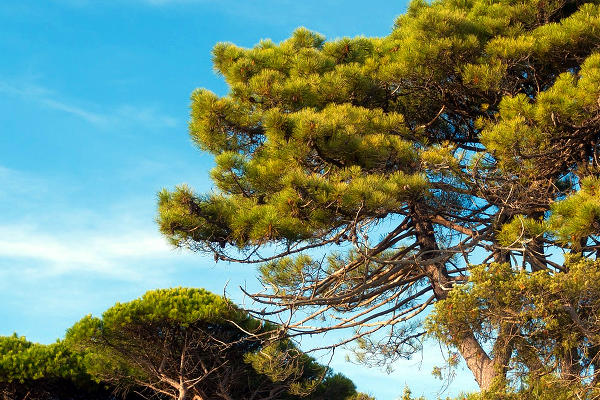
The pine forest extends for about 15 kilometers parallel to the coast line, partially interrupted only by the mouths of the Fiumara and the Canale di San Rocco near Marina di Grosseto.
The thick wood also goes for a few hundred meters towards the immediate hinterland, reaching 2 kilometers at the town of Principina a Mare.

The pine forest is characterized by the presence of maritime pines and domestic pines, with the first ones being more present near the coast and the second towards the hinterland.
Shrubby species of the Mediterranean maquis such as filliree (lillatro), lentischi (sontrio), mirti (mortella), rare holm oaks and some cork oaks (the latter in the stretch between Castiglione della Pescaia and Marina di Grosseto) make it the thick undergrowth.
The original pine forest was considerably smaller than the present one and was characterized by maritime pines and Mediterranean scrub, affecting the areas closest to the coast.
During the eighteenth century, following the reclamation works carried out by the Lorraines, it was necessary to plant a large number of trees also towards the hinterland, with the hope that the original swamp would not reimpossess the lands that had been torn from it with the works of channeling.
Thus it was that the domestic pines were introduced which are currently in a clearly prevalent proportion compared to those endemic to the sea.
The Tombolo pinewood is crossed by the Marina di Grosseto-Castiglione della Pescaia cycle path in the northern section and by the Marina di Grosseto-Principina a Mare cycle path in the southern one.
Marina di Grosseto and the pinewood
